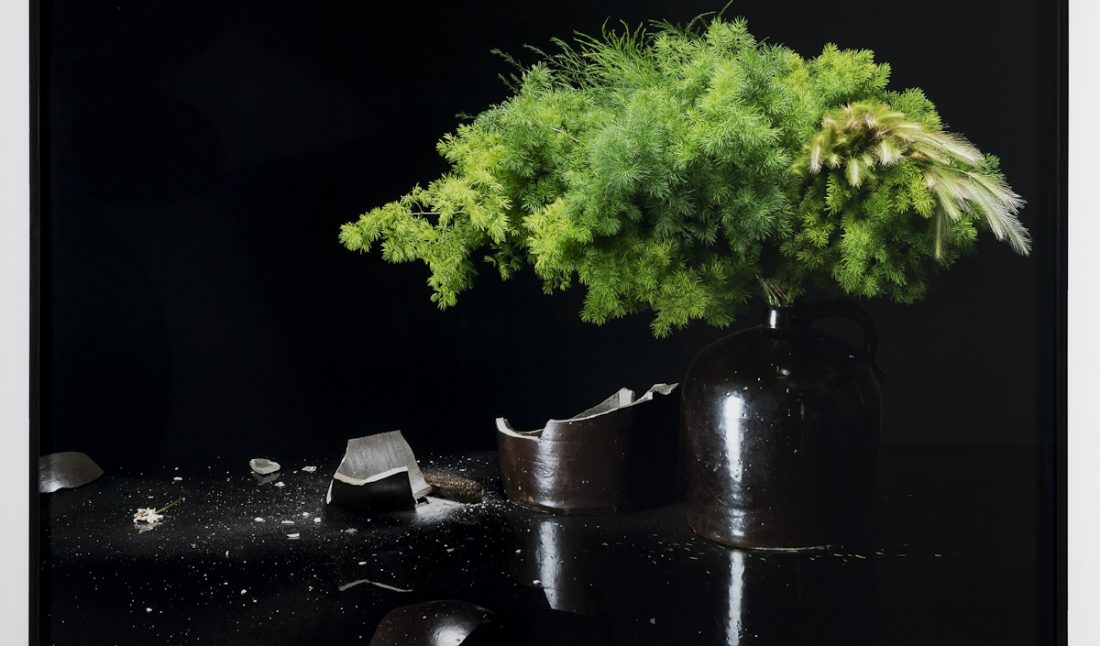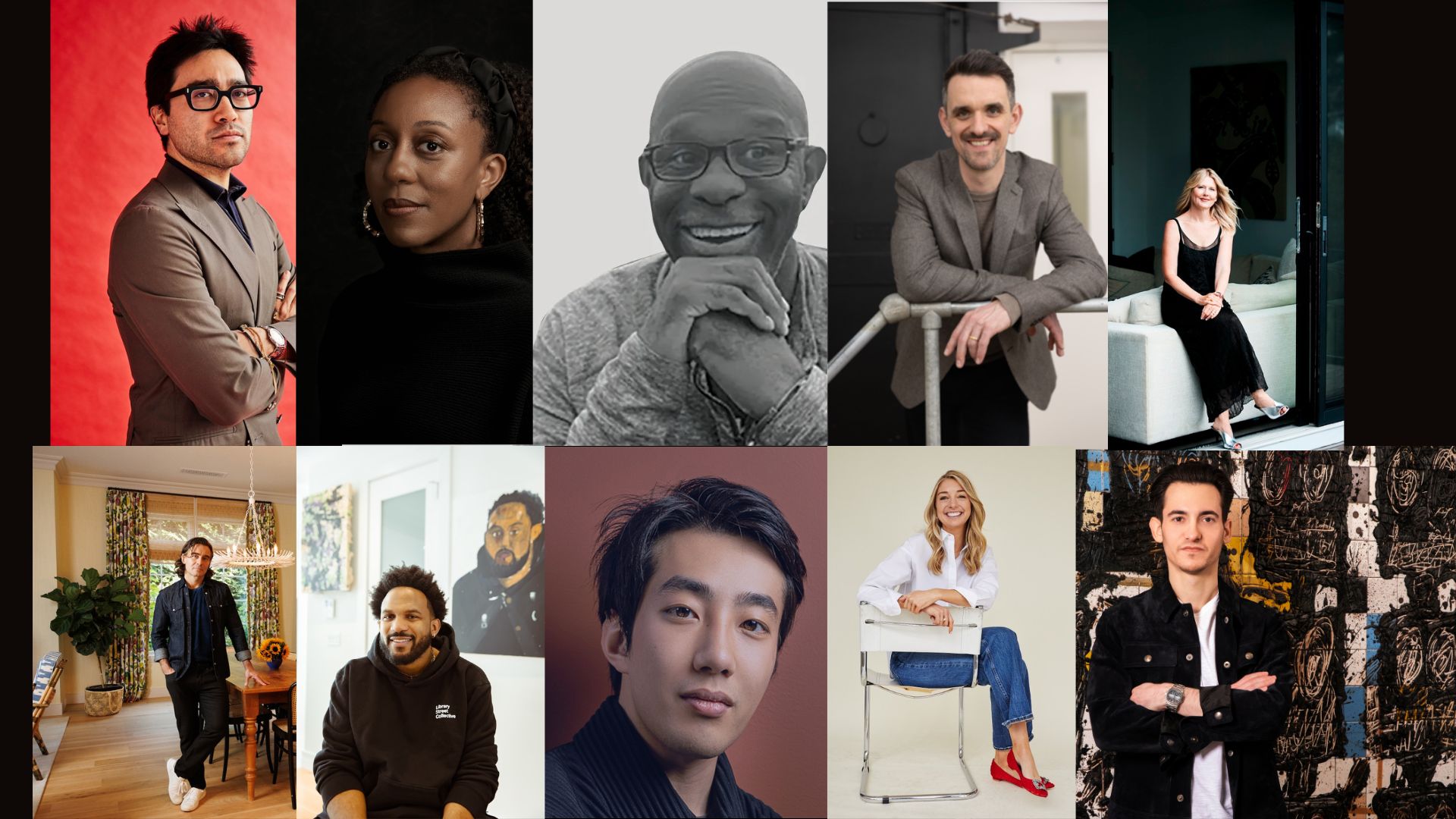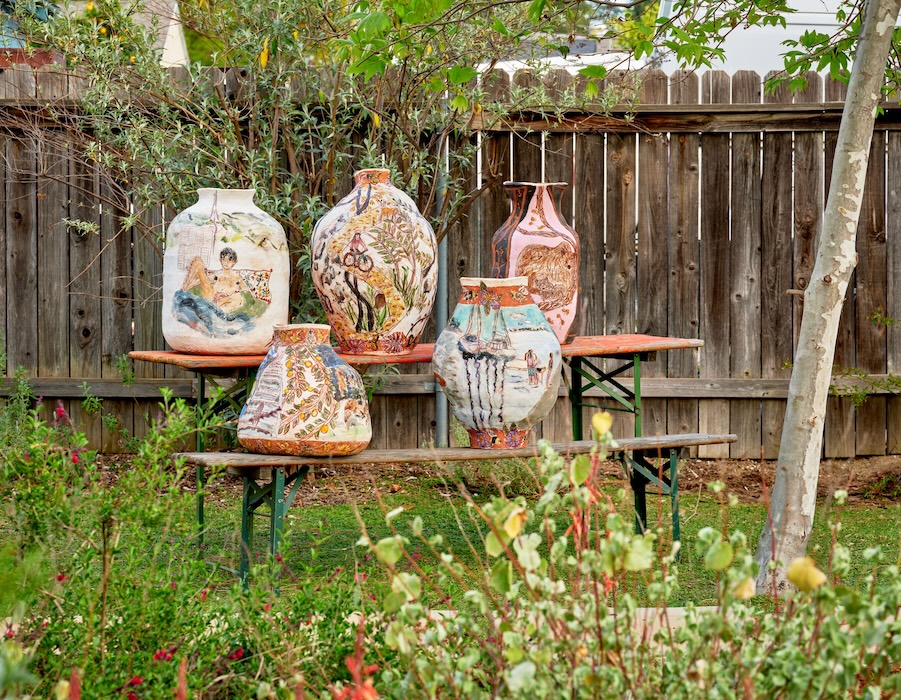At the center of Sharon Lockhart’s current exhibition at Gladstone Gallery in New York is a 30-minute, meditative film called EVENTIDE, shot in Sweden during the Perseid meteor shower. Filmed in a single take, it records several people exploring a craggy beach, as day slowly descends into night. Lockhart captures life ebbing at the horizon line; stars appear like fireflies, and figures come and go. In the adjoining galleries, Lockhart presents a selection of paintings, photography, and sculpture, all dealing with chiaroscuro, where light and dark, unknown and unknown, meet.
Like the intense, dyed, cyanotype paintings that accompany the film, EVENTIDE is both familiar and disorienting. To watch the film, you walk through a narrowed passageway into a darkened room. The film illuminates the far wall, as in most theaters, and in front of it, there’s a bench that blends into the floor. We found ourselves crouching, unsure how high the bench was or if the floor angled downward towards the screen, wobbling as we finally took a seat. While watching, we felt both part of the scene—aware of everyone’s movements, curious and confused—yet conscious of our distance.
Lockhart’s exhibition is multivalent like that; it is masterful in its technique, granular and vast, contemporary, and art historical. Before the exhibition closes on February 26, Whitewall spoke with Lockhart, to learn more about the conception, execution, and contemplation behind this new work.
WHITEWALL: Could you start by telling us about the conception of EVENTIDE and the paintings on view?
SHARON LOCKHART: I began working on EVENTIDE in 2018 in Gotland, Sweden with several of the young women I’d been working within Poland for the previous 10 years. We were thinking about what the future might hold, the night sky and darkness. The sky in Gotland was remarkable and we spent many nights outside looking at the stars. Our time there coincided with the annual Perseid meteor shower, when the earth’s orbit passes through the trail of dust shed by Comet Swift-Tuttle in its 162-year orbit around the sun. The white and gray stone beaches there are also extraordinary. With all this in mind, we came up with the film’s premise: searching the shore, as if for the first time, as dusk recedes into total darkness. As I was working on post-production for the film, I thought more and more about darkness. Sir John Herschel, who invented the cyanotype process in the nineteenth century, was an astronomer and, through experiments with that process, I had the idea to make cyanotype paintings of the night sky under cloud cover, in which the action of light would create the experience of darkness.
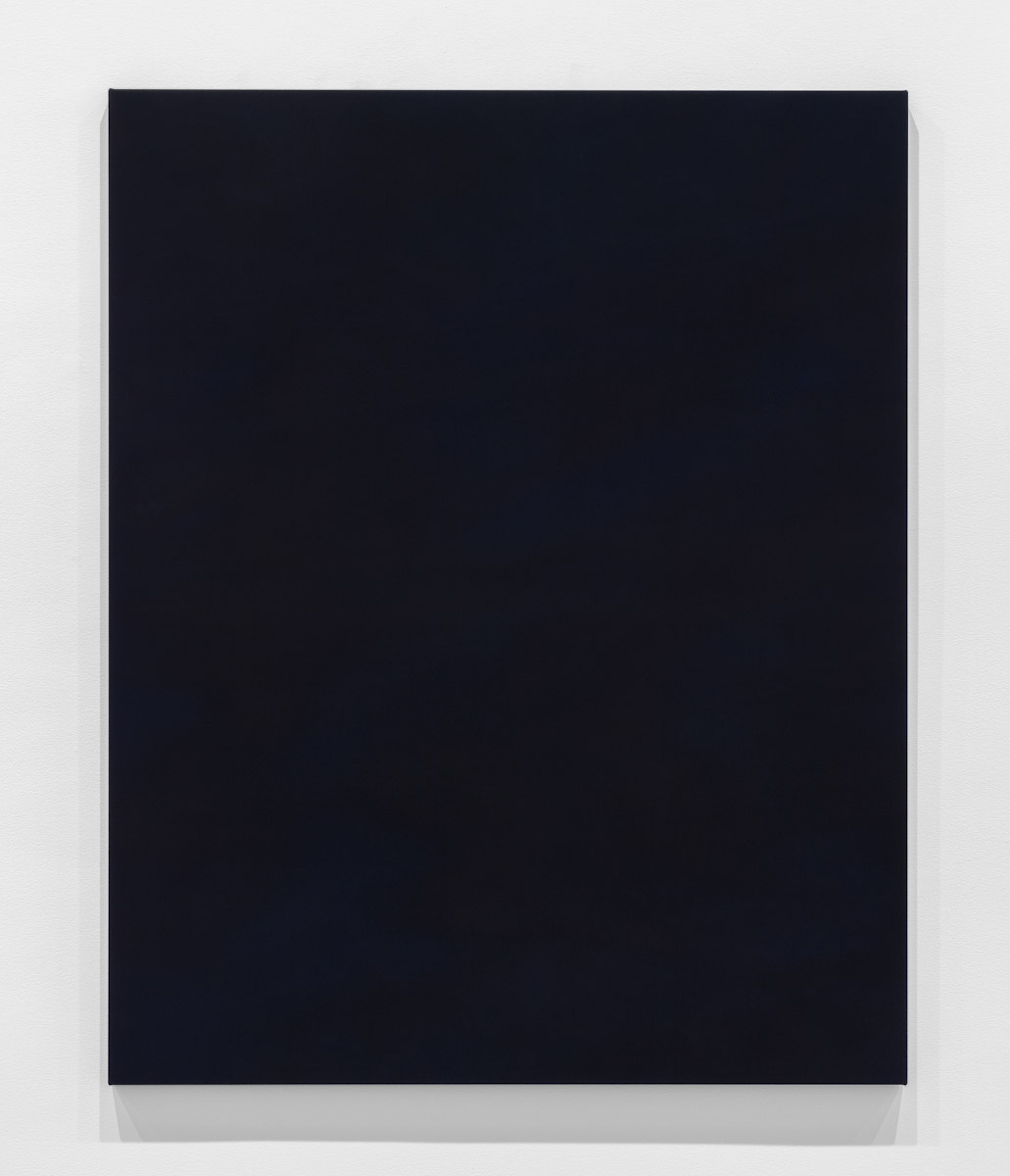 Installation view of Sharon Lockhart at Gladstone Gallery, New York, 2022, photo by Daniel Greer.
Installation view of Sharon Lockhart at Gladstone Gallery, New York, 2022, photo by Daniel Greer.
WW: The paintings, which are extraordinary, are very complex in their composition—resulting in a rewarding (and perhaps disorienting) experience of close-looking. Could you describe the technical process and the layering behind these works?
SL: Yes, it took a long time to figure out this procedure. Each painting starts with several layers of dye to establish the image. I used very bright saturated colors for this since the ensuing layers of cyanotype get so dark. Each dye layer is followed by extensive rinsing to lock in the color. Then the canvases are coated with cyanotype in both overall coats and in the pattern established by the dye. Once dry, the canvases are exposed to the sun for several hours, rinsed thoroughly, and recoated. This is repeated, sometimes up to twenty or thirty times to achieve the right level of darkness. The dye layers seem to disappear but, when you look closely, you can still see subtle shades of color in the blueish blacks. I liked the way the dyes and cyanotype leave no brush marks or texture. It’s important that the canvas’s surfaces are as inscrutable as the image that’s on them. I see them as time capsules. Sometimes they might have over a hundred hours of sunlight chemically stored in their dark surface and, when viewing them, the more time you spend with them, the more you are able to unpack the darkness.
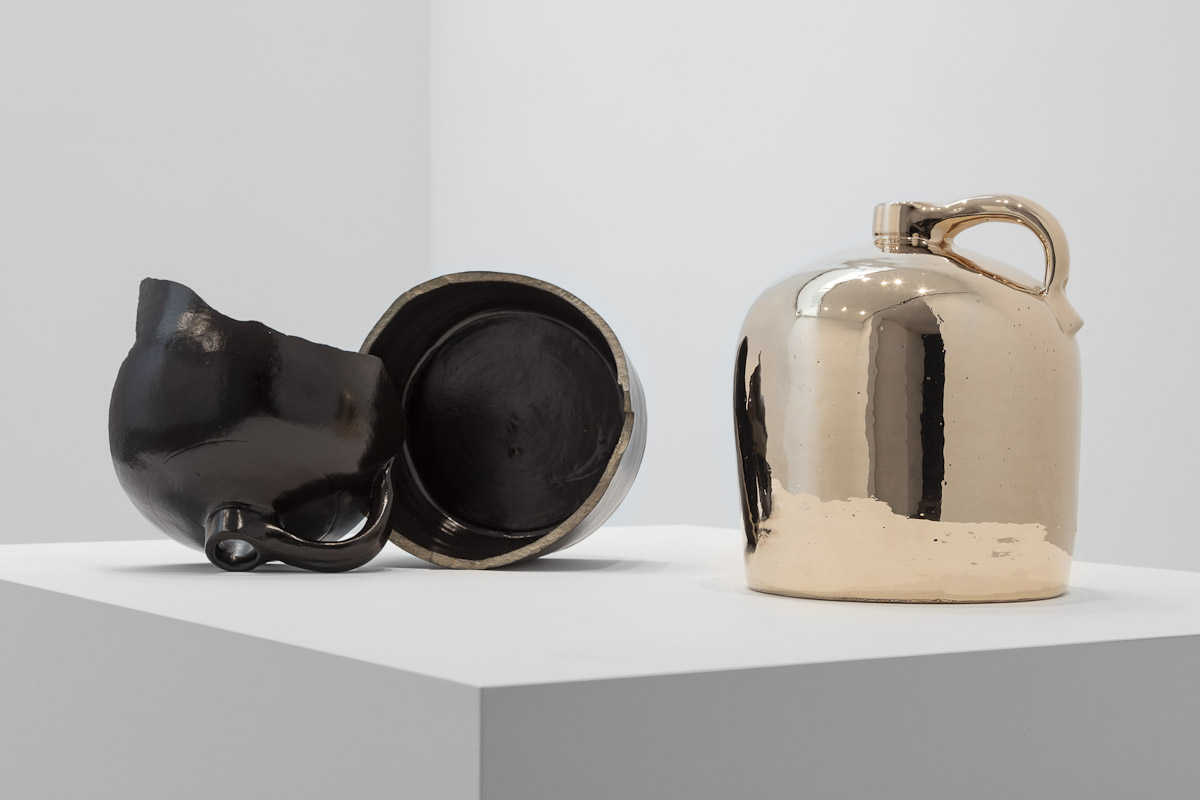 Installation view of Sharon Lockhart at Gladstone Gallery, New York, 2022, photo by Daniel Greer.
Installation view of Sharon Lockhart at Gladstone Gallery, New York, 2022, photo by Daniel Greer.
WW: I wondered if you could also tell me about filming EVENTIDE. Did anything feel different as you were filming than you had expected during the planning process?
SL: I have to say, I don’t know what I expected. We were working with absolutely new technology for low-light filmmaking. I approached it as an experiment. It took several evenings to get it right, to figure out the choreography and timing, as well as camera and exposure issues. We did a lot of camera tests to find the right time to shoot and the right exposure. We also did a lot of planning and mapping of the terrain so everyone was on the same page for the choreography. When the shot started, it was still light enough for the girls to see what they were doing, but it wasn’t long before they really had a hard time seeing any markers for the edge of the scene. At the end, it was really dark. During the shot, we were so focused on the choreography that we didn’t really see all of the stuff going on in the sky. It was a bit of a revelation to see what we had captured during post.
WW: One of the things I loved about EVENTIDE was the way it seemed to play with natural and learned behavior—the way, for example, we respond to realizing other people and bodies are in proximity to us (something I experienced while watching the film, in the darkness, as well as witnessed on the screen). And in general, as I was watching, I felt like I was both a subject on screen and observing from a distance. I wondered if you could tell me about how EVENTIDE deals with its various dualities, including that simultaneous solitude and identification?
SL: That is a great insight. The choreography was designed to suggest that separation. The figures enter one by one and each figure works mostly independently, while it is also implied that they are a team. On a few occasions, two of the figures come together but each leaves the screen by themselves until viewers are just left with the single figure in the darkness, and then alone in the darkness with the image. I also designed the sound so that, in the end, the environmental sounds disappear, accentuating the solitude of that last figure and instilling a sense of the unknown. That is another of the dualities that were at the center of the project: the known and unknown. The idea was that they are exploring an unknown territory. As darkness overtakes the picture, it limits the known world and offers space for imagining what is there. We’ve all had the experience of walking in the darkness and imagining an object or body is closer or further than we thought.
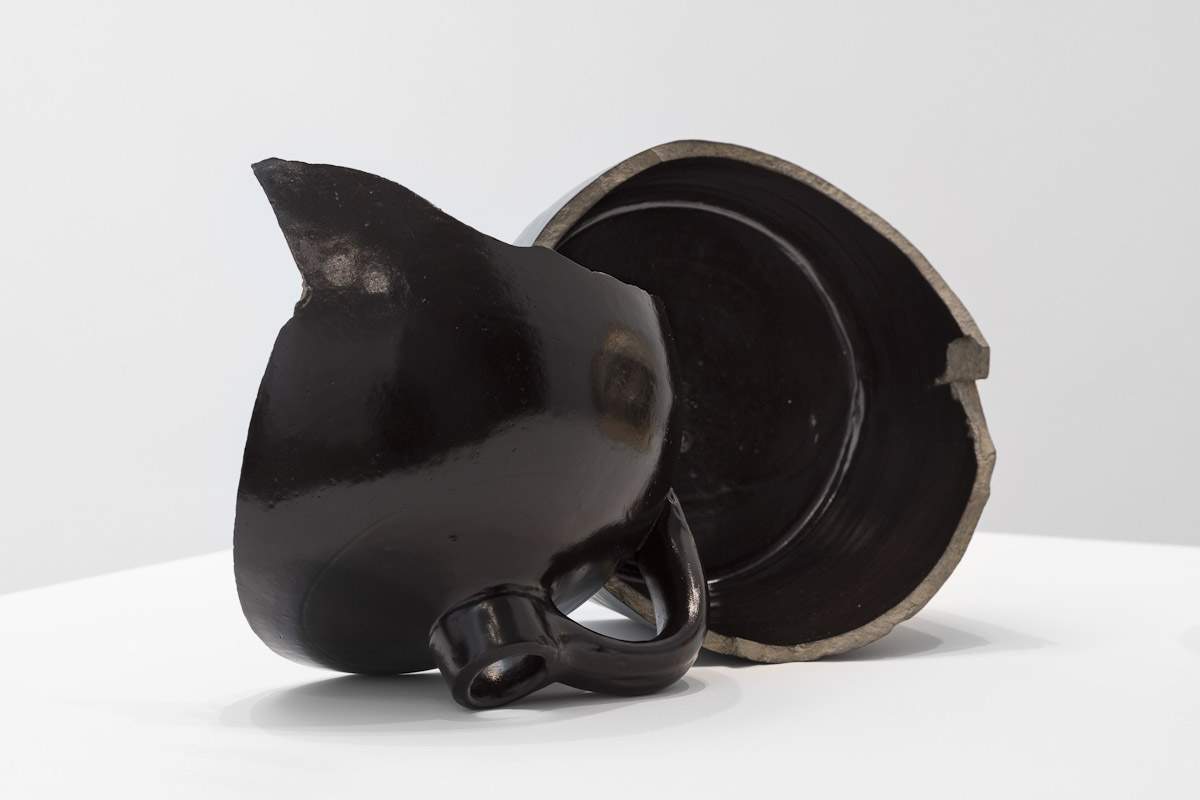 Installation view of Sharon Lockhart at Gladstone Gallery, New York, 2022, photo by Daniel Greer.
Installation view of Sharon Lockhart at Gladstone Gallery, New York, 2022, photo by Daniel Greer.
WW: While I was watching, I couldn’t stop thinking about the concept of the horizon line—and how you were capturing perhaps the most storied art historical subject. Together, EVENTIDE and the cyanotype paintings seem to live somewhere beyond and between Camille Corot, Winslow Homer, Rothko, and Anne Truitt. How do you situate the work within the body of art history? Or do you see it more as an experience generated with contemplations specific to this moment in time?
SL: I’m honored that you drew the connection to those artists. I’ve been working out issues of visuality and the natural world for a long time. You are right to point out the issue of the horizon in EVENTIDE. There is a distinct separation between what is going on in the sky and what’s happening on land, and I think viewers’ attention is drawn back and forth between them. One of the great things about being able to exhibit this work is getting to know it through viewers’ eyes and to see how the pieces relate in installation together. There are certain aspects that weren’t fully articulated in my mind before getting this perspective.
Your question also made me think about the horizon in the cyanotype paintings, which would be almost at the floor, if it were represented. In each of the works in the exhibition, the horizon plays a role. In the photograph, Mike, I worked hard to make the horizon visible, to give viewers a sense of the tabletop, rather than to create the kind of abstract space that one gets with a seamless. It defined the action of gravity when the jug was broken, and all its fragmented pieces fell. The horizon is a conceptual tool we use to understand the visual world. Everything below it we categorize as terrestrial and subject to gravity, while everything above it we think of as celestial and escaping gravity. The final work in the exhibition, the bronzes of the two whiskey jugs, were also carefully considered in relation to the horizon formed by the plinth. I wanted to create a relationship between the pieces that was sculptural and moved away from thinking of them as merely artifacts.
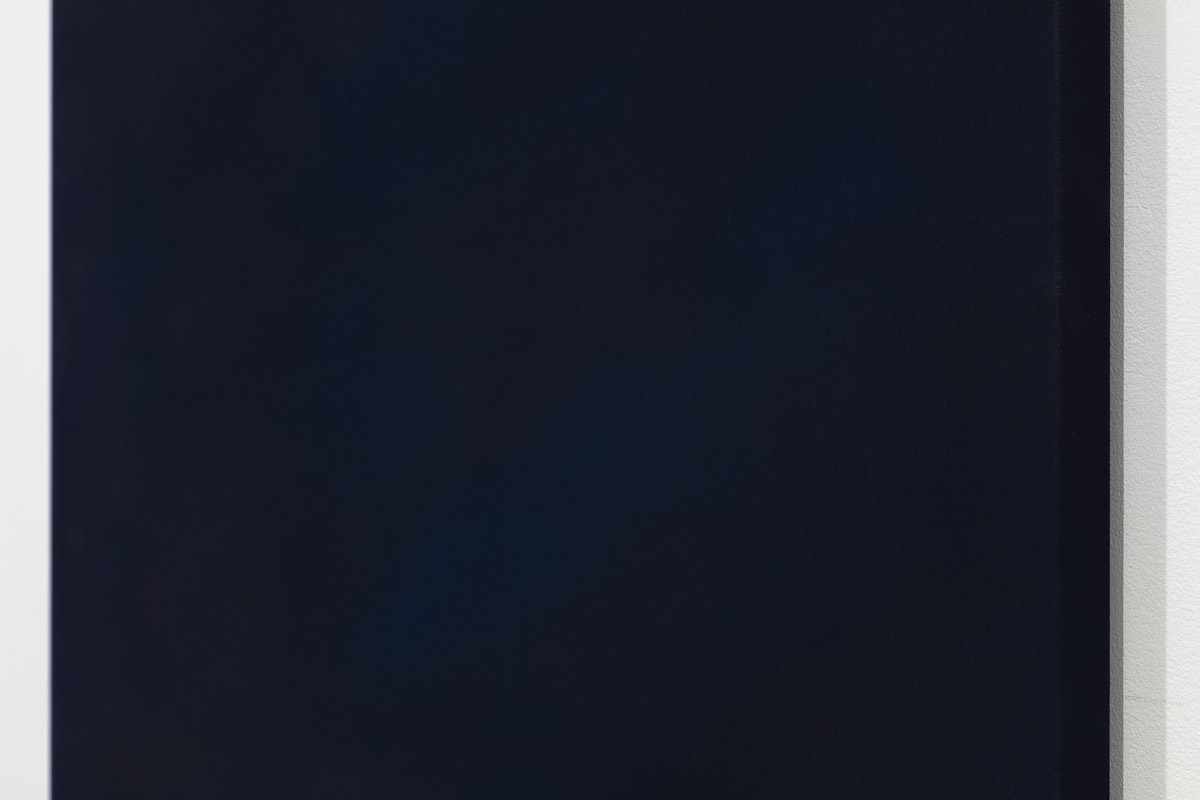 Installation view of Sharon Lockhart at Gladstone Gallery, New York, 2022, photo by Daniel Greer.
Installation view of Sharon Lockhart at Gladstone Gallery, New York, 2022, photo by Daniel Greer.
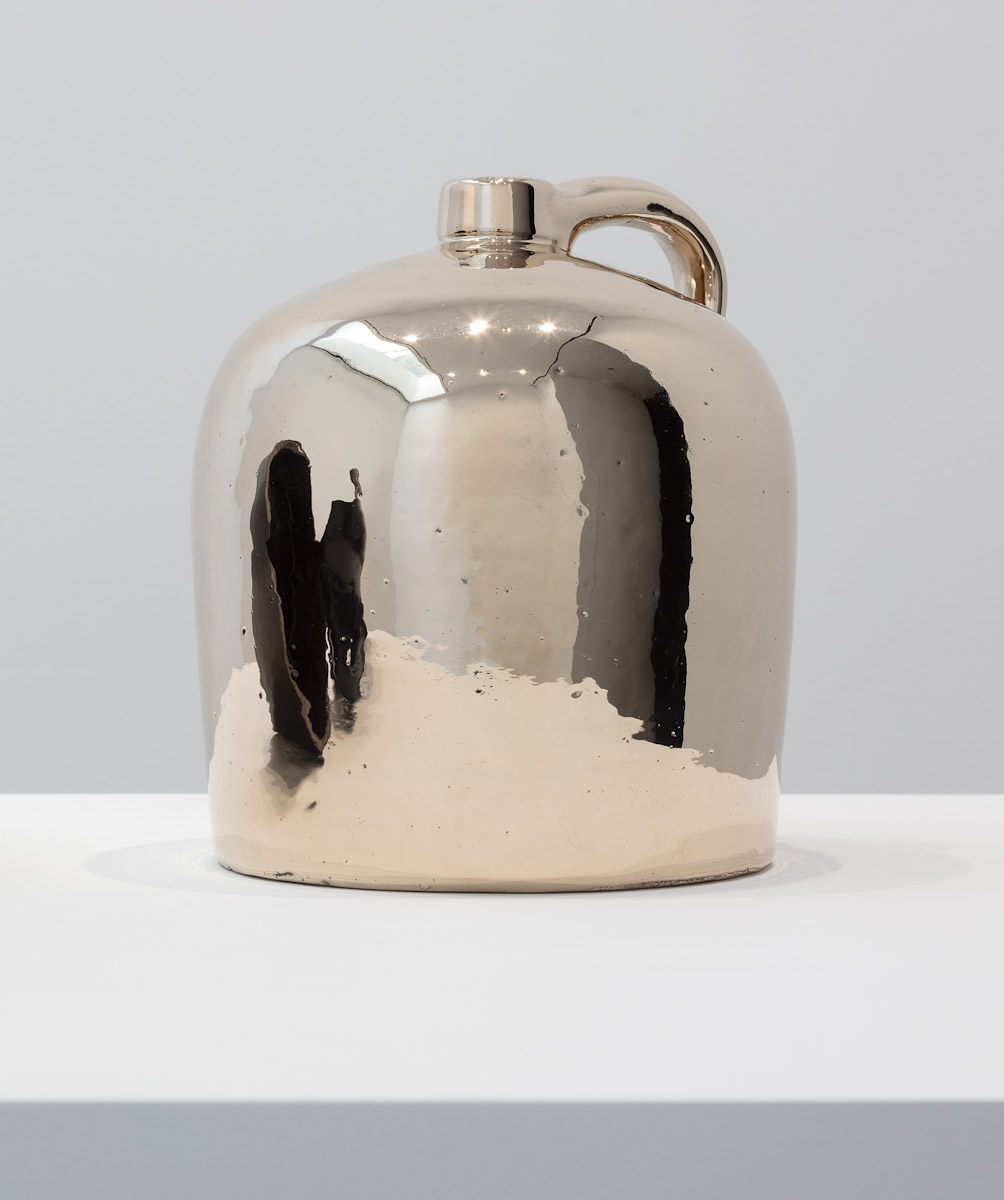 Installation view of Sharon Lockhart at Gladstone Gallery, New York, 2022, photo by Daniel Greer.
Installation view of Sharon Lockhart at Gladstone Gallery, New York, 2022, photo by Daniel Greer.






